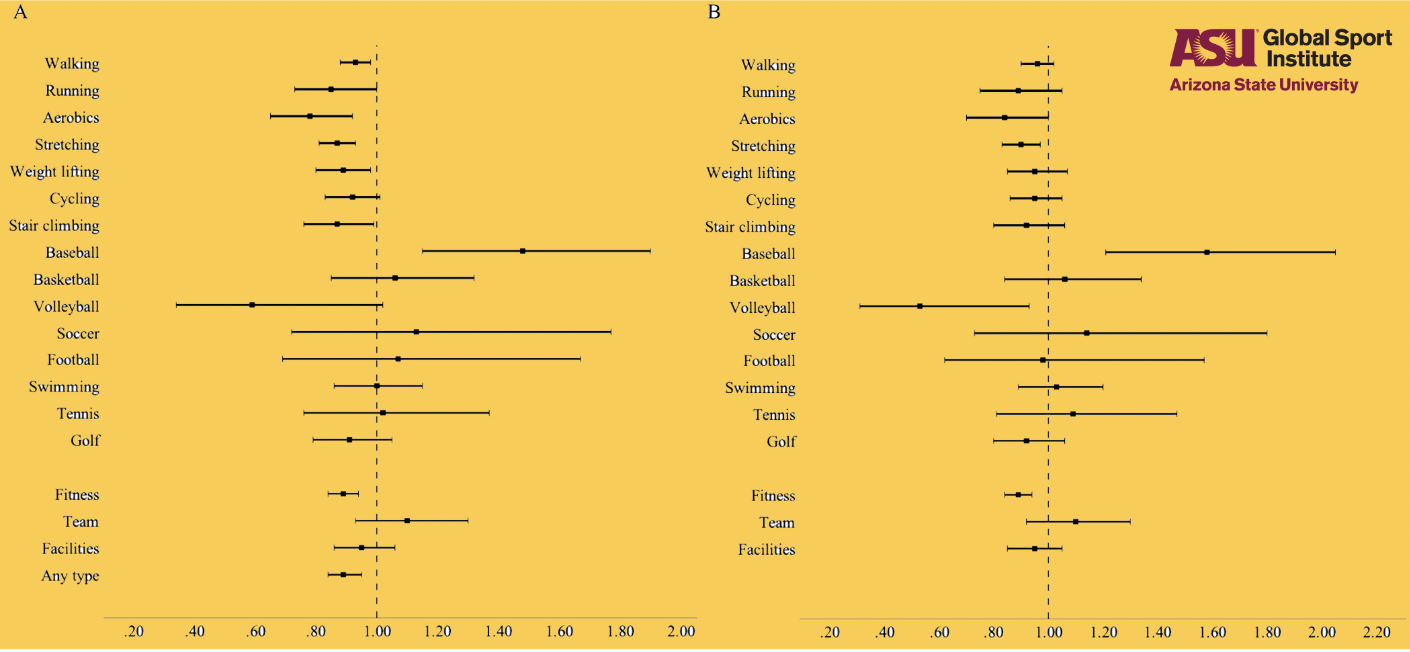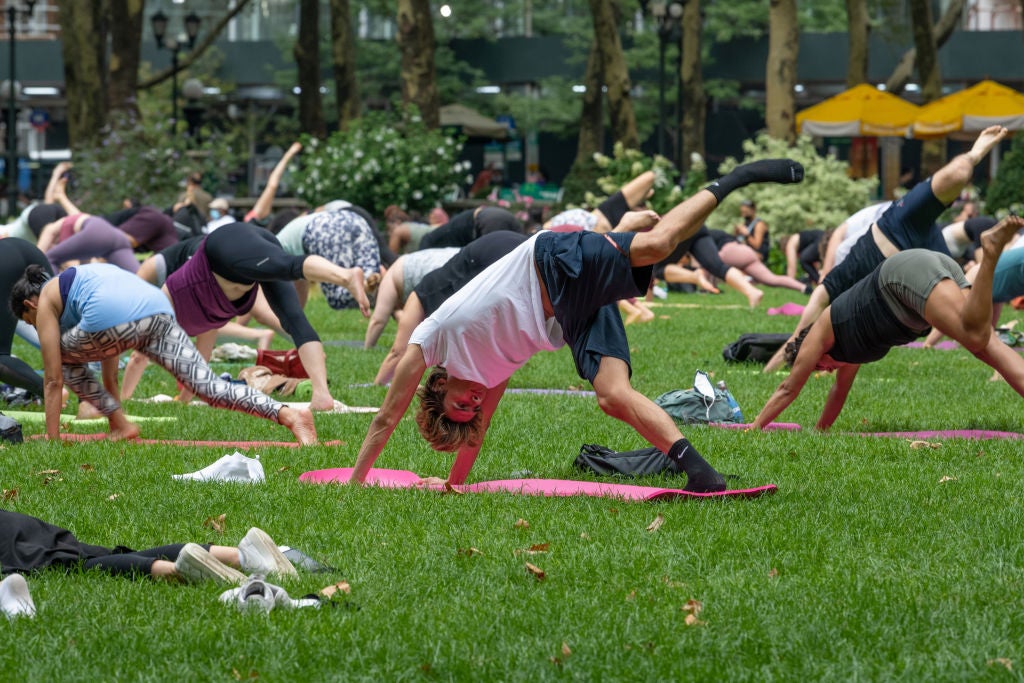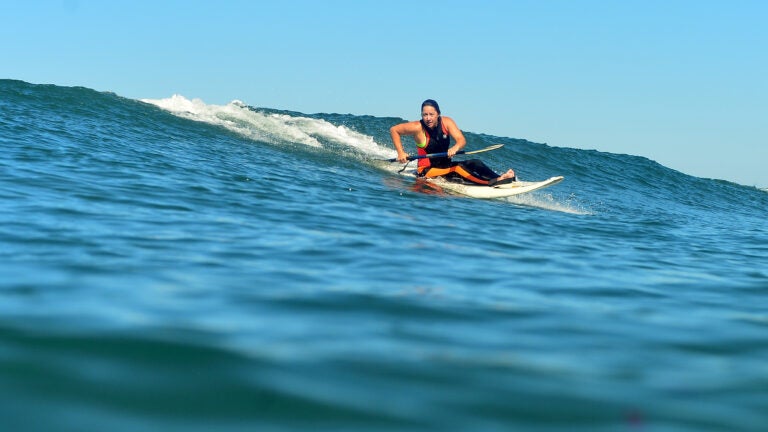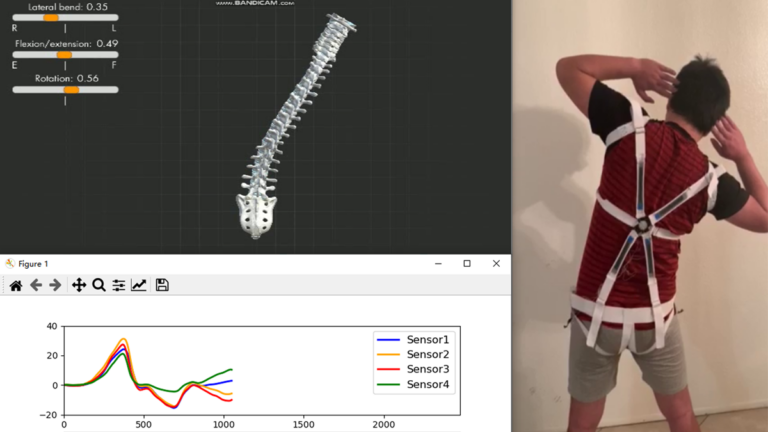Could Fitness Exercises Be the Key To a Longer Life?
Why this matters
Personal workouts are often thought of in terms of training for competition, weight loss, or social connection. But recent Global Sport Institute research indicates it could help people live longer lives, too.
Every New Year brings new fitness goals – but what if smarter workouts could also extend your life?
Recent Global Sport Institute research conducted by Connor Sheehan, PhD, and graduate assistant Longfeng Li sought to answer the question of whether affordable, accessible fitness workouts have an association with longer life. Using data from a National Health Interview Survey of nearly 27,000 Americans in 1998 and analyzed the association between 15 types of exercise and mortality through 2015 using estimated odds ratios and confidence intervals, Sheehan and Li found that:
- Any exercise is better than none at all.
- Adjusted for factors such as demographics and health status, “fitness exercises” consistently demonstrated better health outcomes than other workouts.
- Walking, aerobics, stretching, weight lifting, and stair climbing were associated with a lower risk of death.
As athletes like Tom Brady, Sue Bird, and Rafael Nadal defy the typical aging and performance career curve in to do incredible things we’ve never before seen from older athletes, their efforts to maintain “pliability,” regenerate cartilage, and otherwise training and medical fountains of youth can seem surreal and inaccessible.
Yet while regular people may not have the financial resources to follow suit, this study shows that everyday workout warriors can do a lot to make a big difference in how long they live.
Accessibility may be the most important reason that fitness exercises show the biggest mortality benefit. While team sports require a relatively high level of skill and practice, special facilities and equipment, a group of other people to play with, and sometimes high costs, walking or stretching are simple activities that typically require none of those things. They also can be done well into old age with minimal injury risk – allowing for consistent participation over time.
One comparable study from the Mayo Clinic made waves last year when it showed that people from age 30 to 64 could reverse the effects of aging on their muscles by doing moderate interval training workouts three times per week for three months. One doctor told The New York Times that more intensely deteriorated muscles and those of older participants actually saw the greatest improvement from the workouts.

Two group sports did stand out in Sheehan and Li’s data. Volleyball was the one team exercise that was associated with a lower risk of mortality, while baseball was the one team exercise associated with higher risk. The researchers surmised that baseball’s close correlation with risk of death could come from the sport’s proclivity for tobacco chewing, especially prior to a partial ban on the substance in Major League Baseball’s 2016 Collective Bargaining Agreement. Among team workouts, a higher volume of tennis exercise also was correlated with a lower risk of mortality.
Playing football and soccer, the two most prominent sports associated with traumatic brain injuries, was not associated with higher risk of mortality during the time frame studied. (However it is relatively unlikely the initial NHI survey included many professional athletes, who presumably have higher levels of cumulative exposure to the head impacts that have been linked to increased brain injury risk).
Specifics of why these sports correlated with various risks of death can be speculated upon, but from a sociological perspective, the camaraderie and interpersonal connection offered by sport is believed to have a positive impact, in addition to the physiological benefit. Sports and exercise also provide meaning and goals, which humans also need.
Moving the body in any way benefits physical health and longevity, and the best workouts for prolonging life are also the easiest ones to pull off, no matter where someone may be or what everyday habits they have.
Monthly Issue
Sport & the Body
The body is the most fundamental component of sport, capable of unthinkable feats and requiring considerable care. Athletes continually push their bodies to the brink in order to excel at their craft, and the 21st century has brought about a reimagining of the limits of physical ability.
Yet as the world of sport intensifies its focus on the body, athletes are demanding better care, more freedom, and increased flexibility around how they maintain and shape theirs.





